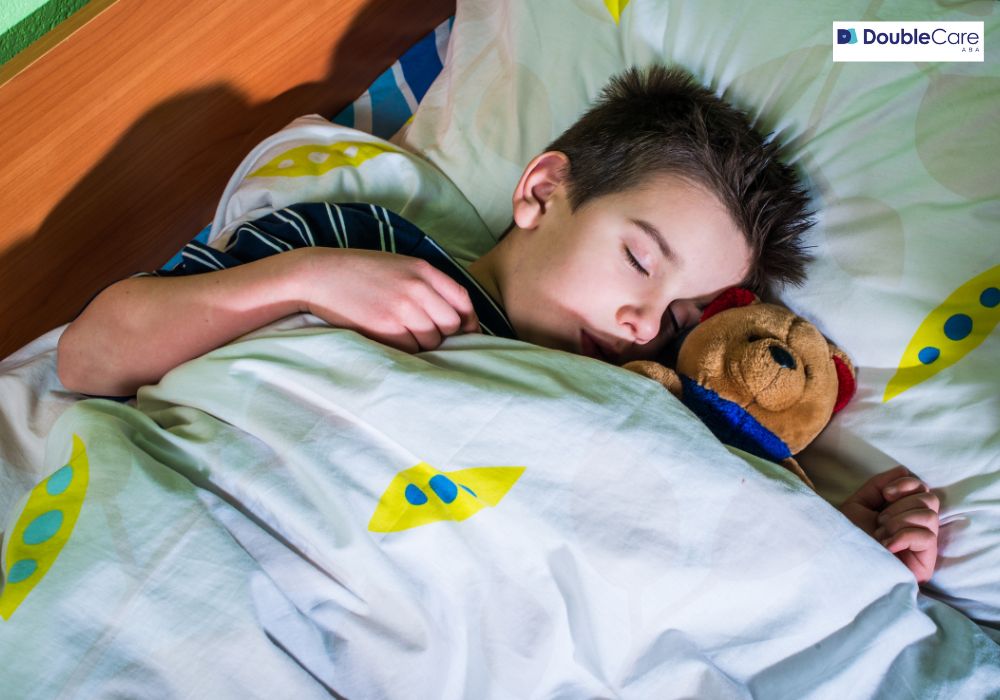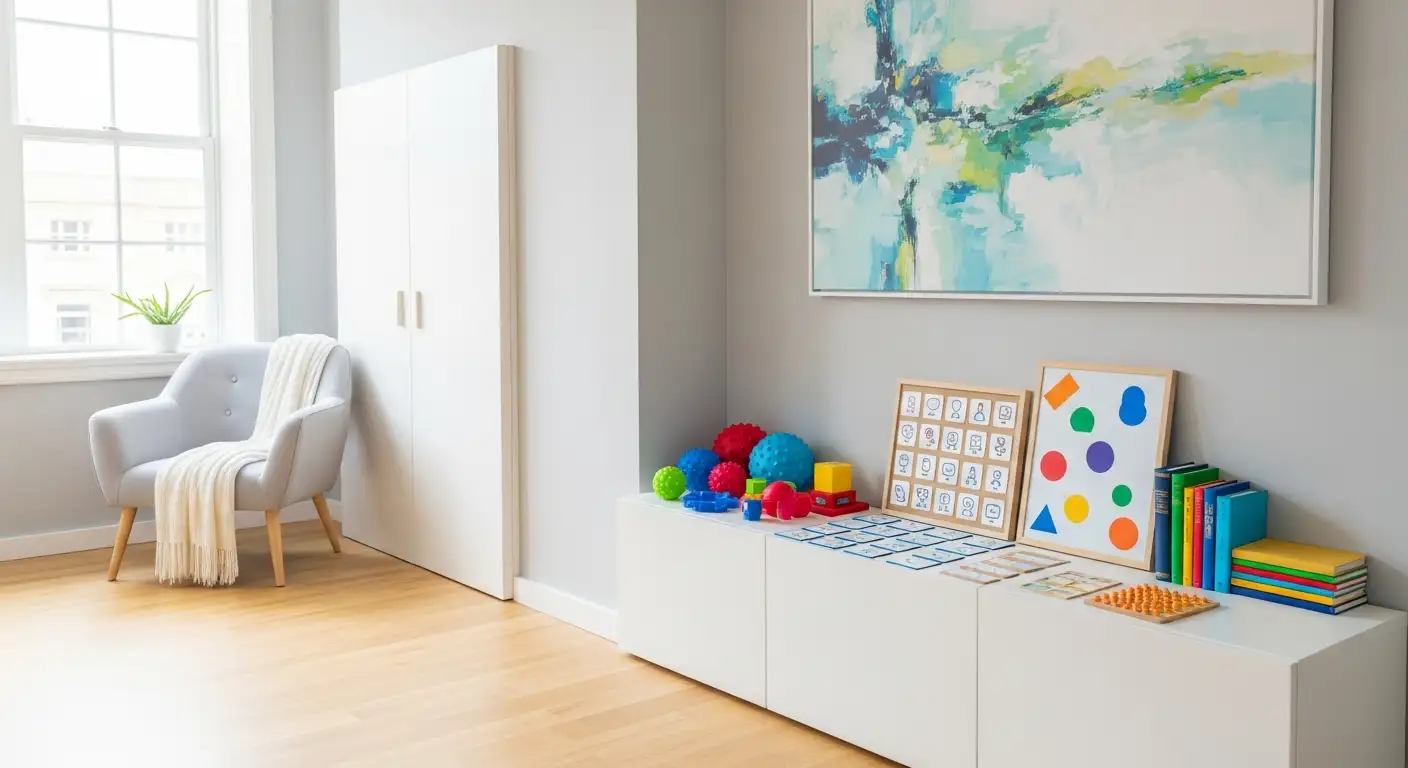Getting a good night's sleep can be a challenge for any child, but it can be especially difficult for children with autism. Sleep issues are common among kids with autism, and these difficulties can impact the entire family. However, with the right sleep strategies and support, parents can help their children achieve better sleep patterns. This article explores effective sleep strategies and how incorporating ABA in-home therapy Brooklyn, NY, can further assist in addressing sleep challenges.
Understanding Sleep Challenges in Autism
Children with autism often experience sleep disturbances for a variety of reasons. These can include difficulties with transitioning to bedtime, a lack of routine, heightened anxiety, or even physiological differences. Understanding these challenges is the first step in developing effective sleep strategies.
Establish a Consistent Sleep Routine
One of the most critical sleep strategies is to create a consistent bedtime routine. This routine should be predictable and calming, helping to signal to the child that it is time to wind down. Consistency in bedtime and wake-up times is crucial. A well-established routine can include activities such as reading a book, taking a warm bath, or listening to soothing music. Keeping the routine consistent every night reinforces the child's internal clock and improves sleep quality.
Create a Sleep-Inducing Environment
The sleep environment plays a significant role in sleep quality. For children with autism, creating a sleep-friendly environment can be particularly helpful. Consider the following tips to enhance the sleep environment:Dim the Lights: Use dim lighting in the evening to help signal to the child that bedtime is approaching. Bright lights can be stimulating and make it harder for the child to wind down.Reduce Noise: Use white noise machines or soft, calming music to help drown out disruptive noises. This can be especially beneficial for children who are sensitive to sound.Comfortable Bedding: Ensure that the child's bedding is relaxed and conducive to sleep. Soft, breathable fabrics can help create a more restful sleep environment.
Implement Relaxation Techniques
Relaxation techniques can help children with autism transition from wakefulness to sleep. Techniques such as deep breathing exercises, progressive muscle relaxation, or guided imagery can help calm the mind and body. Practicing these techniques as part of the bedtime routine can improve the child's ability to fall asleep and stay asleep.

Monitor and Adjust Diet and Exercise
Diet and exercise play a role in sleep quality. Encourage a balanced diet and regular physical activity, but avoid stimulating foods and drinks close to bedtime. Caffeine and sugar can interfere with sleep, so it is best to avoid these in the hours leading up to bedtime. Additionally, ensure that physical activity is part of the child's daily routine, but avoid vigorous exercise right before bed as it can be stimulating.
Address Anxiety and Stress
Children with autism may experience heightened anxiety and stress, which can disrupt sleep. It is essential to address these issues through appropriate strategies and support. Techniques such as cognitive-behavioral therapy, social stories, and visual schedules can help manage anxiety. For children receiving ABA in-home therapy in Brooklyn, NY, therapists can work with families to develop tailored strategies to address sleep-related anxieties and improve overall well-being.
Evaluate and Modify Sleep Associations
Sleep associations are habits or objects that a child associates with falling asleep. While some sleep associations are beneficial, such as a favorite stuffed animal, others can become problematic if they lead to sleep disruptions. Evaluate the child's sleep associations and consider modifying them if necessary. For instance, if the child relies on a parent's presence to fall asleep, gradually working on self-soothing techniques can help foster independent sleep.
Utilize Visual Supports
Visual supports, such as visual schedules or bedtime charts, can provide structure and predictability, which are especially important for children with autism. Visual supports help the child understand the sequence of bedtime activities and what to expect. For example, a bedtime chart that outlines each step of the bedtime routine can serve as a visual reminder and reduce anxiety around the bedtime process.
Seek Professional Support
Sometimes, sleep difficulties may require professional intervention. Pediatricians, sleep specialists, and therapists can provide valuable insights and strategies tailored to the child's specific needs. For families utilizing ABA in home therapy in Brooklyn, NY, behavior analysts can collaborate with other professionals to address sleep issues comprehensively and integrate effective strategies into the therapy plan.
Encourage Healthy Sleep Habits
Encouraging healthy sleep habits is an ongoing process. Educate the child about the importance of sleep and involve them in developing their bedtime routine. Encourage activities that promote relaxation and well-being throughout the day. Additionally, it is crucial to be patient and flexible as you implement these strategies. It may take time to find the right combination of techniques that work for your child.
Monitor and Track Sleep Patterns
Tracking sleep patterns can provide valuable insights into the child's sleep habits and help identify potential issues. Keep a sleep diary to record bedtime routines, sleep onset, wake times, and any nighttime disturbances. This information can be helpful for professionals when assessing the child's sleep and making necessary adjustments to the sleep strategies.
Integrating ABA in Home Therapy for Sleep Improvement
ABA (Applied Behavior Analysis) in-home therapy in Brooklyn, NY, can significantly improve sleep for children with autism. ABA therapists can work closely with families to implement individualized strategies that address specific sleep challenges. Through behavior modification techniques, therapists can help establish and reinforce positive sleep behaviors, manage sleep-related anxieties, and ensure consistency in bedtime routines.ABA therapy can also support the development of self-management skills that contribute to better sleep. For example, therapists can teach children relaxation techniques and self-soothing strategies, which can be integrated into the bedtime routine. Additionally, ABA therapists can provide guidance and support to parents, helping them navigate sleep challenges and implement effective sleep strategies.
Conclusion
Effective sleep strategies are essential for improving the quality of sleep for children with autism. By establishing a consistent sleep routine, creating a sleep-friendly environment, and addressing underlying issues such as anxiety and stress, parents can significantly enhance their child's sleep. With patience, consistency, and the proper support, families can create a restful sleep environment that promotes overall well-being for their children. For additional support and ABA professionals, visit us at Double Care ABA.
FAQs
What are some effective sleep strategies for children with autism?
Establishing a consistent bedtime routine, creating a calming sleep environment, implementing relaxation techniques, and monitoring diet and exercise are all effective strategies. Consistency in these areas helps signal to the child that it is time to wind down for bed.
How can a consistent bedtime routine help with sleep issues?
A consistent bedtime routine provides predictability and helps signal to the child that it's time to transition to sleep. This routine might include calming activities like reading a book, taking a warm bath, or listening to soothing music, which can help the child relax and prepare for sleep.
What role does the sleep environment play in improving sleep?
A sleep-friendly environment can significantly impact sleep quality. Key elements include dim lighting, reduced noise, and comfortable bedding. Creating a space that minimizes disturbances and promotes relaxation can help the child fall asleep more quickly and stay asleep longer.
How can relaxation techniques assist with sleep challenges?
Relaxation techniques, such as deep breathing exercises or guided imagery, can help calm the child's mind and body before bed. Incorporating these techniques into the bedtime routine can make it easier for the child to transition from wakefulness to sleep.
What dietary changes can help improve sleep in children with autism?
Avoiding stimulating foods and drinks, such as caffeine and sugar, in the hours before bedtime can improve sleep quality. A balanced diet and regular physical activity are also essential, but avoid vigorous exercise right before bed as it can be stimulating.
How can anxiety and stress affect a child's sleep?
Anxiety and stress can make it difficult for children with autism to fall asleep or stay asleep. Addressing these issues through strategies such as cognitive-behavioral therapy, social stories, and visual schedules can help manage anxiety and improve sleep.
What are sleep associations, and how can they impact sleep?
Sleep associations are habits or objects that a child associates with falling asleep. While some associations are beneficial, such as a favorite stuffed animal, others can cause problems if they become necessary. Evaluating and modifying problematic sleep associations can help improve sleep.
How can visual supports assist with bedtime routines?
Visual supports like bedtime charts or visual schedules provide structure and predictability, helping the child understand what to expect during the bedtime process. This can reduce anxiety and make the transition to sleep smoother.
When should I seek professional support for sleep issues?
If sleep difficulties persist despite implementing sleep strategies, it may be time to seek professional support. Pediatricians, sleep specialists, and therapists can provide valuable insights and tailored approaches to address specific sleep challenges.














